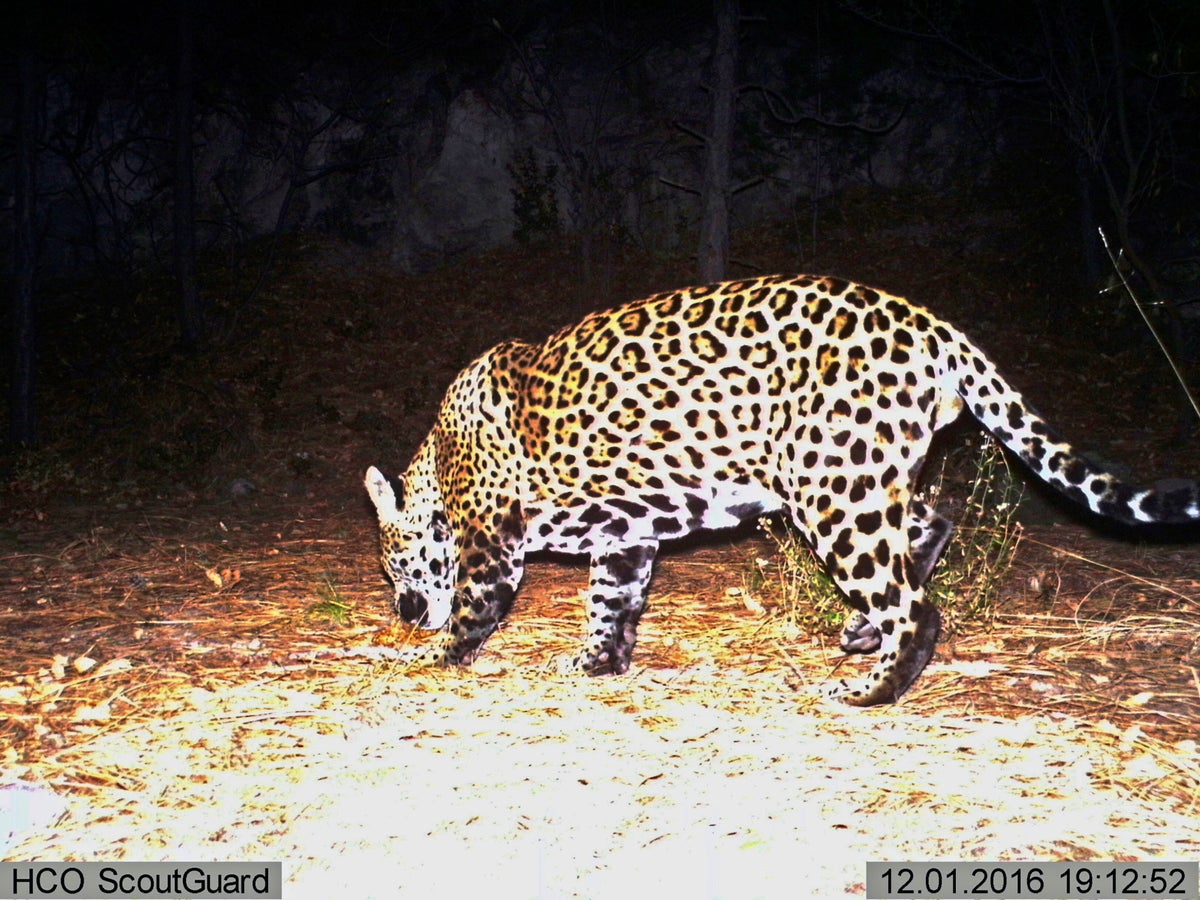
An environmental group on Monday petitioned the U.S. Fish and Wildlife Service to help reintroduce the jaguar to the Southwest, where it once roamed for hundreds of thousands of years before being whittled down to just one of the big cats known to survive in the region.
The male jaguar named Sombra — shadow in Spanish — has been seen in southern Arizona several times since first captured on a wildlife camera in the Dos Cabezas Mountains in 2016, including a 2017 video by the Center for Biological Diversity. There are a handful of jaguars known to be living across the border in the Mexican state of Sonora.
The center wants the federal agency to help expand critical habitat for jaguars in remote areas and launch an experimental population in New Mexico's Gila National Forest along the border with Arizona.
“Over 50 years since the jaguar was placed on the endangered species list, we should not be facing the realistic prospect that this sole jaguar in Arizona will be the last,” Michael J. Robinson senior conservation advocate for the Center for Biological Diversity wrote to Martha Williams, director of the U.S. Fish and Wildlife Service, and Interior Secretary Deb Haaland.
“This could be an amazing opportunity for us to restore a native species that was here for hundreds of thousands of years and deserves to come back,” Robinson said in an interview.
Jaguars ranged throughout North America before they were killed to the point of extinction for their stunning spotted pelts and to protect livestock.
Robinson said failure to do something could also affect efforts to save the dwindling jaguar population in Mexico that needs the kind of genetic diversity possible through mating with a new group of big cats to the north.
Jaguar populations in many places from Mexico to South America are shrinking as well. They are being reintroduced to their historic range in Argentina through a program in which they are bred in captivity and released.
The center was among environmental groups involved in successful efforts to launch the recovery of the gray wolf population that dropped to near extinction a half century ago.
Like jaguars, gray wolves once ranged most of the U.S. but were wiped out in most places by the 1930s under government-sponsored poisoning and trapping campaigns.
A remnant population in the western Great Lakes region has since expanded to some 4,400 wolves in Michigan, Minnesota and Wisconsin. And more than 2,000 wolves occupy six states in the Northern Rockies and Pacific Northwest.
The rarest subspecies of gray wolf in North America, the Mexican wolf, was listed as endangered in the 1970s and a U.S.-Mexico captive breeding program was started with the seven wolves then in existence.
The results of the latest annual survey of the Mexican gray wolves released in March showed at least 196 in the wild in New Mexico and Arizona — the sixth straight year that the wolf population has increased.
Robinson said efforts to protect the jaguar never enjoyed the momentum of the gray wolf campaign.
“People forget or don't know that the jaguar actually evolved in North America, ranging from the Pacific to the Atlantic, and then spread to the south,” he said.
Concerns about the jaguar's future were mentioned in a letter the center sent Oct. 19 to Arizona Gov. Doug Ducey, giving his administration a 60-day notice of its intent to file a lawsuit to halt the ongoing placement of shipping containers along the U.S.-Mexico border.
The letter says the San Rafael Valley in southeastern Arizona is among the last established corridors for jaguars and ocelots between the two countries.







